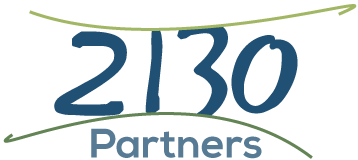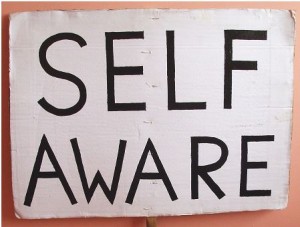To move into a New Year powerfully and to create the results you want there are some key steps to take. The first is creating an “elegant ending” to the past. Last week we posted about “letting go of 2013,” and included a free download of a worksheet to help you do it. Now it’s time to move on to envisioning and documenting your 2014 “Yonder Star(s)” and creating plans for fulfillment.(Note: The first part of this post talks about how to effectively map out your personal goals. If you want to move straight into planning for your business check out the last paragraph of this post. We’ve got a Hot Wired Strategic Plan template for you as a free download.) One way to help yourself succeed is to make your resolutions “public” to others. To put more wind in your sails, promise others that you will deliver! You can ask someone you trust to be a “committed listener.” This involves a commitment from them to listen to you as you talk about the status of your plans, your struggles and your successes. It does not involve them giving advice or telling you what to do next, (unless you make a specific request for it).
Another way to succeed is to hire a coach. Someone who is trained to support people in achieving their dreams and plans.
If you are a bit more experienced at this process, take a step up in rigor and create a set of goals for the different areas of your life. Categories you might include are: 1) Career/Financial 2) Well-Being or Health 3) Relationships 4) Spiritual 5) Personal 6) Wild Card How bold are you willing to be setting your goals? If you are completely certain you can make the goals are you stretching yourself enough? Focus on designing the most catalytic, highly leveraged action steps you can. By “catalytic” we mean that your actions produce the intended results without your being used up in the process. By “highly leveraged,” we mean you produce very big results with minimal resources.
If you’ve been successful at this level of work and/or are ready to take on your first effort at a Strategic Plan for your company or affiliation, we suggest using what we call our “2130 Partners Hot Wired Strategic Plan.” We call it Hot Wired because it covers many of the levels and topics of an elaborate plan and yet you can produce a decent draft in a couple of hours. The next pass can then be developed to whatever level of detail you wish. The key, however, is to get the initial draft knocked out in as short a time as you can so that you shift your paradigm about goals and actions as you develop the more detailed plans. You can download the worksheet for our 2130 Partners Hot Wired plan by clicking here.

 Building on my recent blog about
Building on my recent blog about  In an article about how to rethink global strategy
In an article about how to rethink global strategy “Leaders have to recognize what everyone is saying and also be the catalyst that will call out not what makes people happy but what needs to be done to move forward." - Dr. Speciosa Wandira-Kazibwe, Former Vice President of Uganda
I
“Leaders have to recognize what everyone is saying and also be the catalyst that will call out not what makes people happy but what needs to be done to move forward." - Dr. Speciosa Wandira-Kazibwe, Former Vice President of Uganda
I  The longer I work with leaders the more I see how often they damage or destroy great opportunities by failing to deal with their own “inner demons” or limiting beliefs. I witness damage not just to their companies, but to their personal lives. One of my CEO clients is now entering the divorce process after only recently telling me what a great relationship he had. Turns out his wife feels like she can’t trust him in ways that are important to her and he didn’t even see it.
In this complex day and age self-awareness is a requirement of leaders and leadership. In order to be really effective at the level now required, you need to have an objective understanding of what you are good at, what you are not good at, how well you do or don’t connect with people, what kind of impact or “wake” you leave behind when you exit a meeting, how you handle conflict and stress, how you manage your personal reactivity and more. This level of self-understanding enables you to successfully make better choices for yourself, your team and your organization. Even Richard Branson is acknowledging the importance of self-awareness for leaders in a
The longer I work with leaders the more I see how often they damage or destroy great opportunities by failing to deal with their own “inner demons” or limiting beliefs. I witness damage not just to their companies, but to their personal lives. One of my CEO clients is now entering the divorce process after only recently telling me what a great relationship he had. Turns out his wife feels like she can’t trust him in ways that are important to her and he didn’t even see it.
In this complex day and age self-awareness is a requirement of leaders and leadership. In order to be really effective at the level now required, you need to have an objective understanding of what you are good at, what you are not good at, how well you do or don’t connect with people, what kind of impact or “wake” you leave behind when you exit a meeting, how you handle conflict and stress, how you manage your personal reactivity and more. This level of self-understanding enables you to successfully make better choices for yourself, your team and your organization. Even Richard Branson is acknowledging the importance of self-awareness for leaders in a  At a breakfast meeting during the recent
At a breakfast meeting during the recent  At a recent
At a recent  One of the essential steps to increased leadership effectiveness and more productive interactions is “acceptance” (both of ourselves and others). While it’s easy to say, our work with clients and
One of the essential steps to increased leadership effectiveness and more productive interactions is “acceptance” (both of ourselves and others). While it’s easy to say, our work with clients and  In a recent
In a recent  When members of our society organize to accomplish goals, they typically choose between two major domains – the “For-Profit” and the “Not-for-Profit” worlds. We tend to believe each of these worlds is very different and “ne’er the twain shall meet.”
Is this division useful and valuable or limiting and restrictive for a vast number of participants? Is it real or is it largely just perception? The for-profit world is supposedly where the tough and the self-serving duke it out for money. The non-profit world is supposedly where people who care go to make a difference in the world and be of selfless service. Furthering the depth of the chasm between the two, there is generally little cross-over or sharing of ideas. Yes, the tax laws and the accounting world have drawn a completely separate set of rules for each, but the divide extends much further to commonly include separate recruiting and training channels,
When members of our society organize to accomplish goals, they typically choose between two major domains – the “For-Profit” and the “Not-for-Profit” worlds. We tend to believe each of these worlds is very different and “ne’er the twain shall meet.”
Is this division useful and valuable or limiting and restrictive for a vast number of participants? Is it real or is it largely just perception? The for-profit world is supposedly where the tough and the self-serving duke it out for money. The non-profit world is supposedly where people who care go to make a difference in the world and be of selfless service. Furthering the depth of the chasm between the two, there is generally little cross-over or sharing of ideas. Yes, the tax laws and the accounting world have drawn a completely separate set of rules for each, but the divide extends much further to commonly include separate recruiting and training channels,  There is an expression I hear regularly around the table of the executive meetings I lead. It is “I have to___” (fill in the blank). To me, this comment comes from the “survival brain.” It is born in burden and sacrifice and it is a close cousin to “I should,” “I ought to,” “I gotta” etc. In addition, these openers carry an “unsaid” piece that follows on – something like “…but I can’t” or …”we don’t have the money and/or time”…”they won’t let me, etc.” When I hear the, “I have to…” it usually comes from a place of feeling victimized or overwhelmed and I know nothing fruitful will come of it.
This conversational pattern passes for normal and quite often will get you off the hook of further questioning from peers. It lets your own mind off the hook for performance. It also masks the real consequences of failure to act, failure to produce the results in question, or failure to have that important, scary conversation that’s being avoided. Needless to say, there will be consequences!
There is an expression I hear regularly around the table of the executive meetings I lead. It is “I have to___” (fill in the blank). To me, this comment comes from the “survival brain.” It is born in burden and sacrifice and it is a close cousin to “I should,” “I ought to,” “I gotta” etc. In addition, these openers carry an “unsaid” piece that follows on – something like “…but I can’t” or …”we don’t have the money and/or time”…”they won’t let me, etc.” When I hear the, “I have to…” it usually comes from a place of feeling victimized or overwhelmed and I know nothing fruitful will come of it.
This conversational pattern passes for normal and quite often will get you off the hook of further questioning from peers. It lets your own mind off the hook for performance. It also masks the real consequences of failure to act, failure to produce the results in question, or failure to have that important, scary conversation that’s being avoided. Needless to say, there will be consequences! A colleague of mine recently joined the Board of Directors of a favorite non-profit with much enthusiasm, only to discover how much drama was going on behind the scenes among the Board members. She has found herself in the middle of one of the top issues that diminish team effectiveness – “the undiscussables.” The stories she has shared with me are very similar to those I have heard over and over in my practice from CEO clients about issues within their teams.
A lot of money and time gets spent creating what appears to be shared vision, mission, values, and alignment. But what happens when all that work isn’t enough? What happens when the team remains dysfunctional even though they appear to share the stated vision, values, and desired outcomes? What lies beneath are the “real issues” or “undiscussables” that were not addressed in the planning sessions or consultants’ work.
A colleague of mine recently joined the Board of Directors of a favorite non-profit with much enthusiasm, only to discover how much drama was going on behind the scenes among the Board members. She has found herself in the middle of one of the top issues that diminish team effectiveness – “the undiscussables.” The stories she has shared with me are very similar to those I have heard over and over in my practice from CEO clients about issues within their teams.
A lot of money and time gets spent creating what appears to be shared vision, mission, values, and alignment. But what happens when all that work isn’t enough? What happens when the team remains dysfunctional even though they appear to share the stated vision, values, and desired outcomes? What lies beneath are the “real issues” or “undiscussables” that were not addressed in the planning sessions or consultants’ work. Are you missing out on a powerful source of creativity by overlooking the introverts in your organization and the way they work best?
Susan Cain has a wonderful
Are you missing out on a powerful source of creativity by overlooking the introverts in your organization and the way they work best?
Susan Cain has a wonderful  In a USA Today article entitled, “
In a USA Today article entitled, “ The Pacific Northwest Vistage Chairs have been using a powerful system called “The Enneagram” for their own development and for some of their groups. For those who have not heard of it, The Enneagram has been around since at least the 4th century. It is a system that identifies nine core life strategies, made up of habits of emotion and thought, that each of us uses to navigate life. The Enneagram is quite different from personality tests or even typical diagnostics. It’s a very rich system that gives people access to much deeper self-awareness and the possibility of positive change. Some of the most valuable things I’ve noticed about using The Enneagram are:
The system identifies 9 different enneatypes, or 9 different points-of-view, and that helps create compassion both for self and others. Once you realize that people just have different focuses of attention, that they are reacting from deeply engrained habits, and that you are doing the same thing, other people’s behavior doesn’t seem so unexplainable.
The Pacific Northwest Vistage Chairs have been using a powerful system called “The Enneagram” for their own development and for some of their groups. For those who have not heard of it, The Enneagram has been around since at least the 4th century. It is a system that identifies nine core life strategies, made up of habits of emotion and thought, that each of us uses to navigate life. The Enneagram is quite different from personality tests or even typical diagnostics. It’s a very rich system that gives people access to much deeper self-awareness and the possibility of positive change. Some of the most valuable things I’ve noticed about using The Enneagram are:
The system identifies 9 different enneatypes, or 9 different points-of-view, and that helps create compassion both for self and others. Once you realize that people just have different focuses of attention, that they are reacting from deeply engrained habits, and that you are doing the same thing, other people’s behavior doesn’t seem so unexplainable. Recently I was returning from vacation and while sitting on our flight home, the line "...hints at his bad-but-not-too-bad-boy persona" grabbed my attention. It was in an
Recently I was returning from vacation and while sitting on our flight home, the line "...hints at his bad-but-not-too-bad-boy persona" grabbed my attention. It was in an  From moment to moment, which comes first with you, the transaction or the person with whom you are dealing? This simple distinction may be impacting your leadership effectiveness, your team’s morale and passion, and any possibility of shared vision. While transaction first is pretty common in the USA, some cultures won't engage with you if you start there.
Recently during dinner with a dear friend who lives on
From moment to moment, which comes first with you, the transaction or the person with whom you are dealing? This simple distinction may be impacting your leadership effectiveness, your team’s morale and passion, and any possibility of shared vision. While transaction first is pretty common in the USA, some cultures won't engage with you if you start there.
Recently during dinner with a dear friend who lives on  One of the most remarkable misunderstandings in today’s leadership thinking is the instant, automatic, and unexamined assumption that going faster and faster, doing more and more in less time, leads to success. This is something author
One of the most remarkable misunderstandings in today’s leadership thinking is the instant, automatic, and unexamined assumption that going faster and faster, doing more and more in less time, leads to success. This is something author  “The degree to which you are willing to be open and therefore vulnerable strongly influences the degree to which others feel connected to you, are inspired by you, and are willing to trust you and your leadership.”
When I look back and reflect on my experiences with others’ leadership, a high point occurred while I was on an
“The degree to which you are willing to be open and therefore vulnerable strongly influences the degree to which others feel connected to you, are inspired by you, and are willing to trust you and your leadership.”
When I look back and reflect on my experiences with others’ leadership, a high point occurred while I was on an